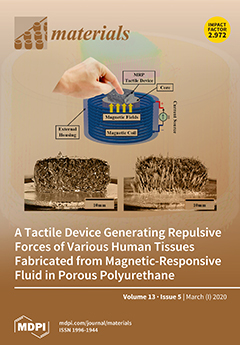Cu/Al
2O
3 ceramic clad composites are widely used in electronic packaging and electrical contacts. However, the conductivity and strength of the interfacial layer are not fit for the demands. So CeO
2 nanoparticles 24.3 nm in size, coated on Al
2
[...] Read more.
Cu/Al
2O
3 ceramic clad composites are widely used in electronic packaging and electrical contacts. However, the conductivity and strength of the interfacial layer are not fit for the demands. So CeO
2 nanoparticles 24.3 nm in size, coated on Al
2O
3 ceramic, promote a novel CeO
2–Cu
2O–Cu system to improve the interfacial bonded strength. Results show that the atom content of O is increased to approximately 30% with the addition of CeO
2 nanoparticles compared with the atom content without CeO
2 in the interfacial layer of Cu/Al
2O
3 ceramic clad composites. CeO
2 nanoparticles coated on the surface of Al
2O
3 ceramics can easily diffuse into the metallic Cu layer. CeO
2 nanoparticles can accelerate to form the eutectic liquid of Cu
2O–Cu as they have strong functions of storing and releasing O at an Ar pressure of 0.12 MPa. The addition of CeO
2 nanoparticles is beneficial for promoting the bonded strength of the Cu/Al
2O
3 ceramic clad composites. The bonded strength of the interface coated with nanoparticles of CeO
2 is increased to 20.8% compared with that without CeO
2; moreover, the electric conductivity on the side of metallic Cu is 95% IACS. The study is of great significance for improving properties of Cu/Al
2O
3 ceramic clad composites.
Full article






